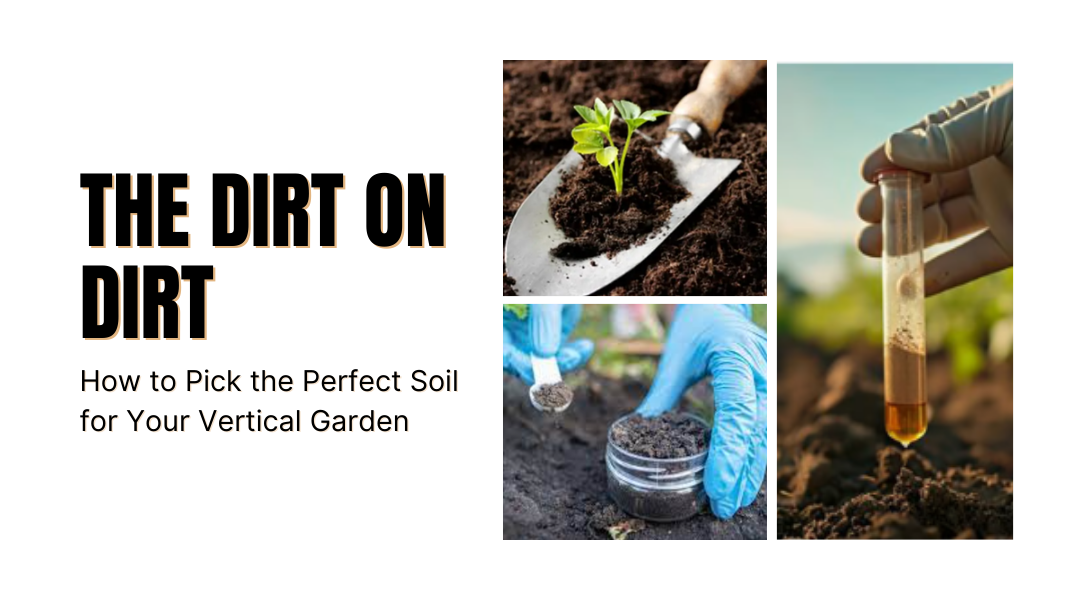You’ve picked out your vertical planters, daydreamed about trailing vines and fresh herbs, maybe even bought a few seedlings. But hold up—before you start planting, there’s one make-or-break factor you can’t ignore: your soil. Get this wrong, and even the hardiest plants will struggle. Get it right, and your vertical garden will practically grow itself.
Why Soil Matters More Than You Think
Vertical gardens aren’t just regular gardens turned sideways. Gravity works against you—water drains faster, nutrients wash away quicker, and roots have less room to spread. That means your soil needs to do double duty: holding moisture without drowning plants, staying light enough not to collapse your structure, and packing enough nutrients to keep things thriving.
The Soil Showdown: Which Type Wins for Vertical Growing?
- Sandy Soil – The Lightweight Contender
- Pros: Drains fast, warms quickly, great for drought-tolerant herbs like thyme and oregano.
- Cons: Nutrients vanish faster than snacks at a party. Needs frequent feeding.
- Hack: Mix in coconut coir or compost to help it hold water longer.
- Clay Soil – The Heavyweight (Literally)
- Pros: Packed with minerals, holds moisture like a sponge.
- Cons: Soggy roots, backbreaking weight—terrible for vertical setups unless you amend it with perlite or grit.
- Best for: Ground-level gardens, not your wall-mounted masterpiece.
- Loam – The Goldilocks Option
- Pros: The perfect middle ground—retains moisture but drains well, rich in nutrients.
- Cons: Hard to find pure loam; often needs tweaking.
- Star Players: Tomatoes, peppers, and most leafy greens thrive here.
- Peat-Based Mixes – The Thirsty Helper
- Pros: Super absorbent, ideal for ferns and moisture-loving plants.
- Cons: Eco-nightmare if not sustainably sourced. Try coconut coir as a planet-friendly alternative.
- DIY Supermix – The Custom Solution
- Recipe: 1 part compost (nutrients) + 1 part perlite (drainage) + 1 part coconut coir (moisture control).
- Why It Works: Tailor it to your plants—add extra compost for veggies, more perlite for succulents.
Pro Tips to Avoid Soil Disasters
- Don’t Skimp on Drainage: A layer of gravel or broken pottery at the base of pockets prevents waterlogging.
- Go Lightweight: Opt for mixes with perlite or vermiculite to avoid straining your structure.
- Feed Regularly: Vertical gardens need more frequent fertilizing—try slow-release pellets or liquid seaweed every few weeks.
- Mulch It Up: A thin layer of straw or bark chips on top reduces evaporation and keeps roots cool.
The Bottom Line
Forget “one-size-fits-all” soil bags. Your vertical garden’s success hinges on matching your soil to your plants’ needs—and your setup’s limits. Start with a lightweight, well-draining base (that DIY supermix never fails), then adjust as you learn. Because here’s the secret no one tells beginners: gardening isn’t about having a green thumb. It’s about starting with good dirt.
